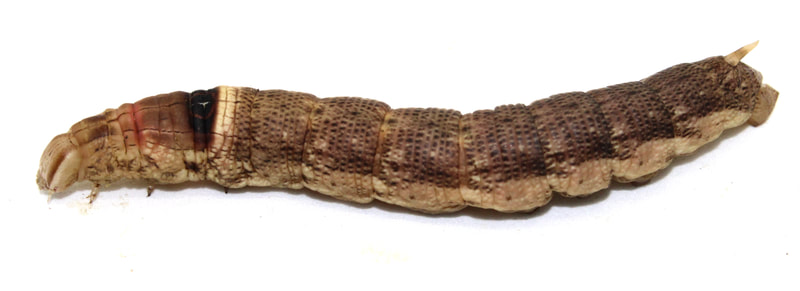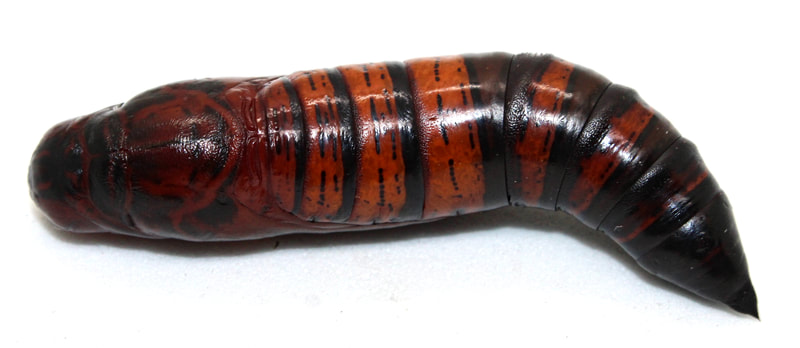|
Common Name(s): Alope Sphinx
Ecology and Life History: This moth is active year-round in South Florida. In Northern Florida, it is active throughout the warm months, likely due to vagrants flying northward. This moth is attracted to light, and both sexes will come to it. It is unlikely other methods such as bait would be effective. This moth is not sexually dimorphic, and males and females look identical. The abdomen of males is more triangular and less round than females. Eggs are laid on the leaves of hostplants. The young larvae feed singly on the undersides of leaves. Older larvae consume leaves from the edge inward. When threatened, this larva will rear back, exposing its eyespot on the first abdominal segments. When this fails to work, it will drop to the ground. Habitat and Searching for Larvae: This moth favors Papaya as a hostplant in Florida. Larvae tend to be found on the newest growth when young, and older growth as they mature. Due to the height of the hostplant, sometimes these larvae are quite high off the ground. It is worth checking leaves of smaller plants, particularly new growth. Suburban yards, urban parks, organic farms, nurseries, fields, and hammocks seem to support this moth, though likely it is a denizen of many habitats. Larvae can be found year-round in South Florida, and may be encountered in August-October in Northern Florida. This larva fluoresces under UV light, but not brightly. Rearing Notes: {COMING SOON} Adult description: One of the most distinctive species in the genus. It is medium sized, with forewings 33-49mm in length (1). The hindwings are yelow-orange which will immediately separate it from the other species. The forewings are fairly bicolored and brown. The top half of the forewings are generally darker than the bottom half. The best way to describe the forewings is bark colored. The thorax has a thick black line running down the middle. The abdomen has 5 pairs of light gray spots. Larval description: L5: The larva is usually brown, but can have a green form as well. The horn is quite short and white. The brown form of the larva is distinctly bicolored with the dorsal surface being significantly darker. The green form lacks this bicoloration. The first few thoracic segments make this larva easy to recognize. There is a pink area followed by a false eyespot. When threatened, this larva will tuck its head down to reveal this spot. The combination of the short horn and the eyespot will help separate this species from other Erinnyis. Host plants: Click here to load this Caspio Cloud Database
Cloud Database by Caspio |
The gallery to the left contains photos of Erinnyis alope adults. If you have a photo that you would like to submit to us, please contact us.
The gallery to the right contains photos of Erinnyis alope larval and pupal stages. If you have a photo that you would like to submit to us, please contact us.
The gallery to the right contains photos of Erinnyis alope larval and pupal stages. If you have a photo that you would like to submit to us, please contact us.















